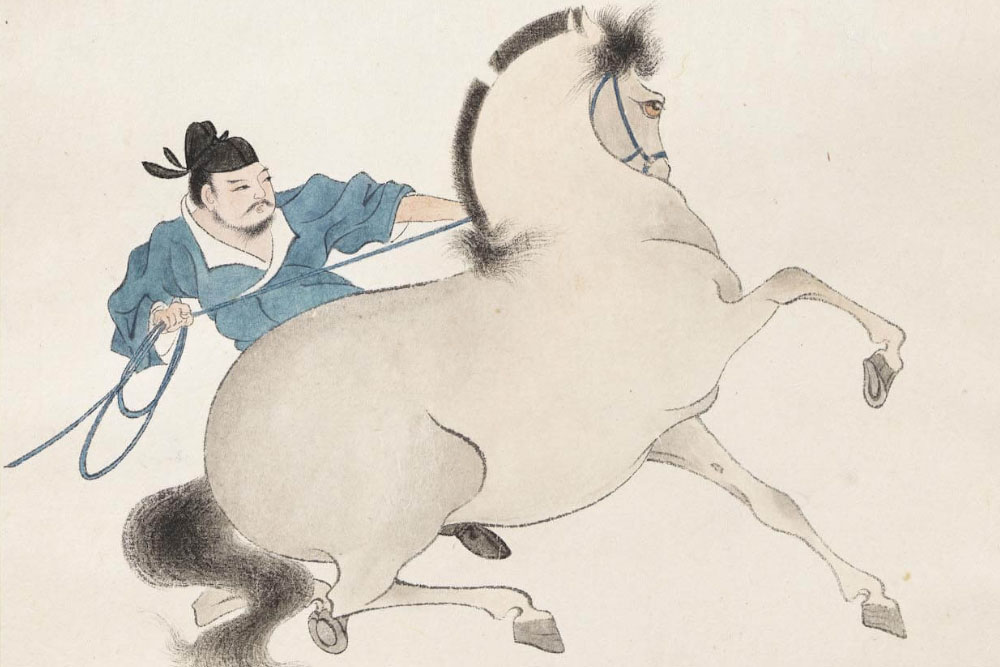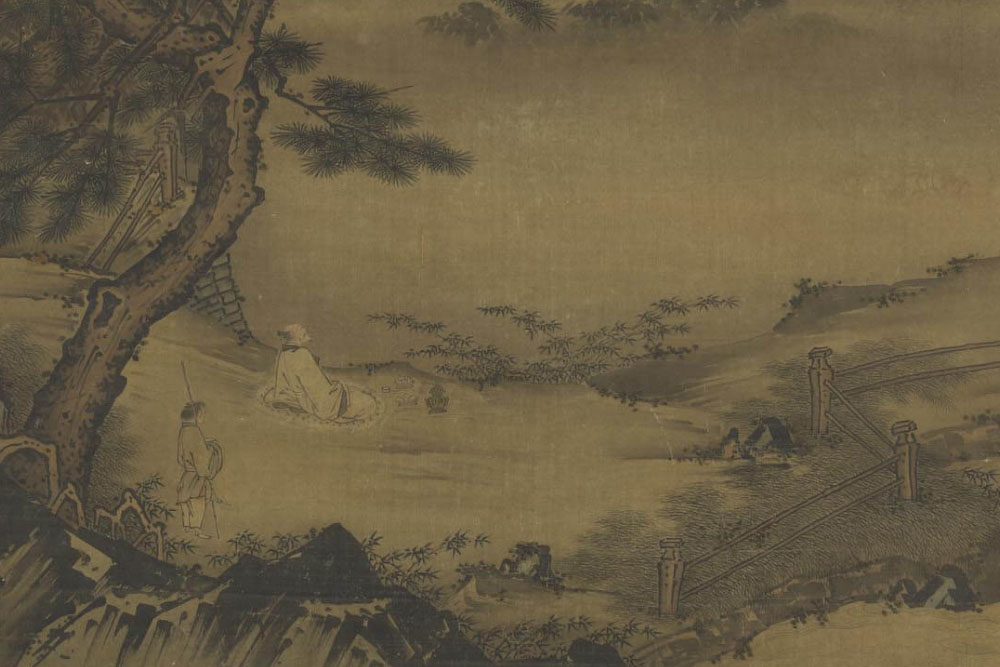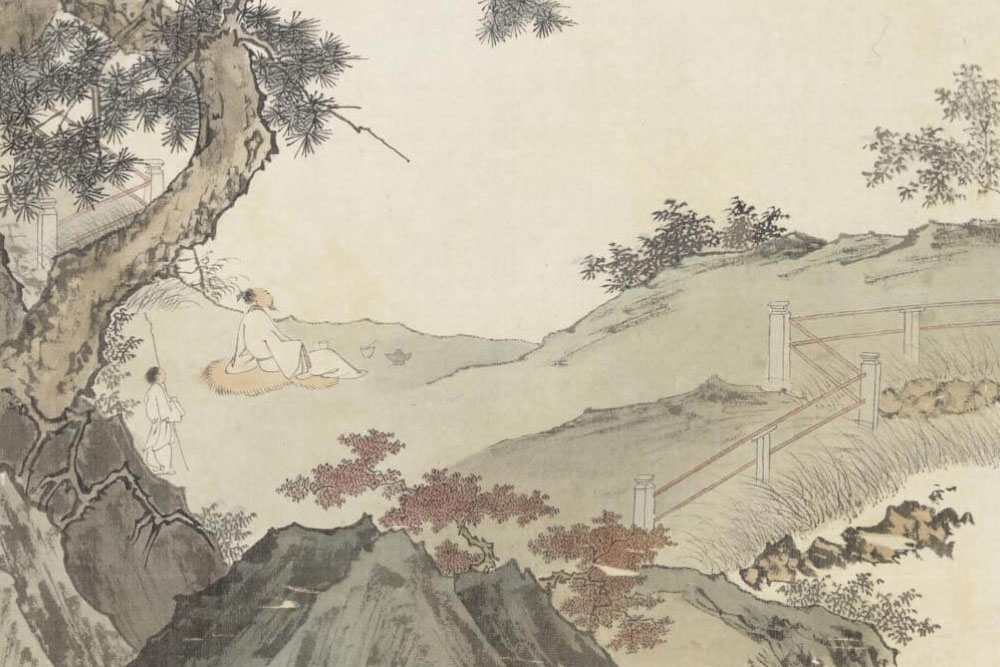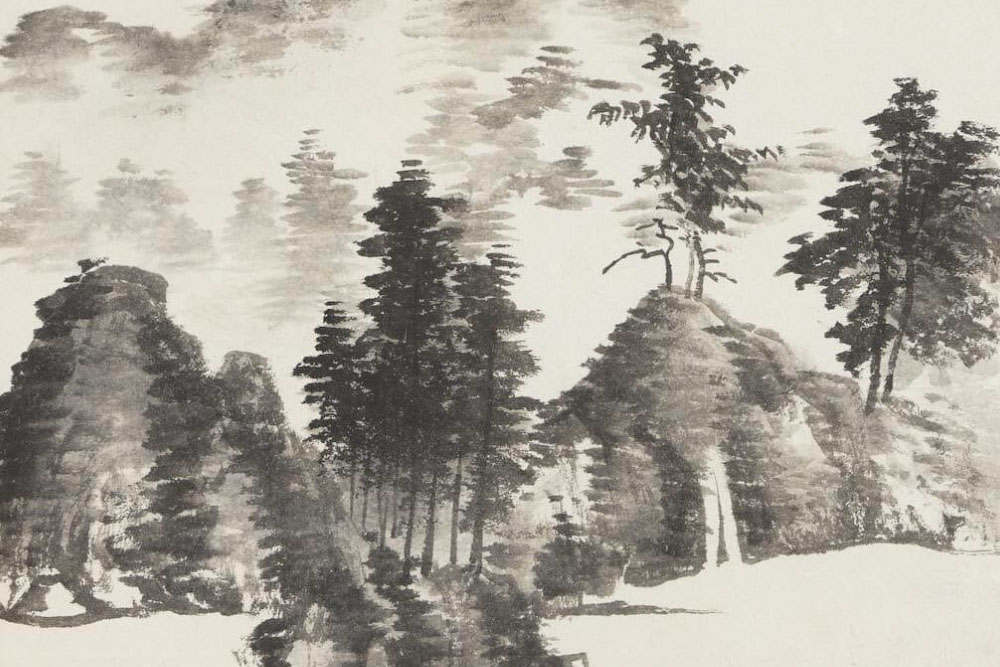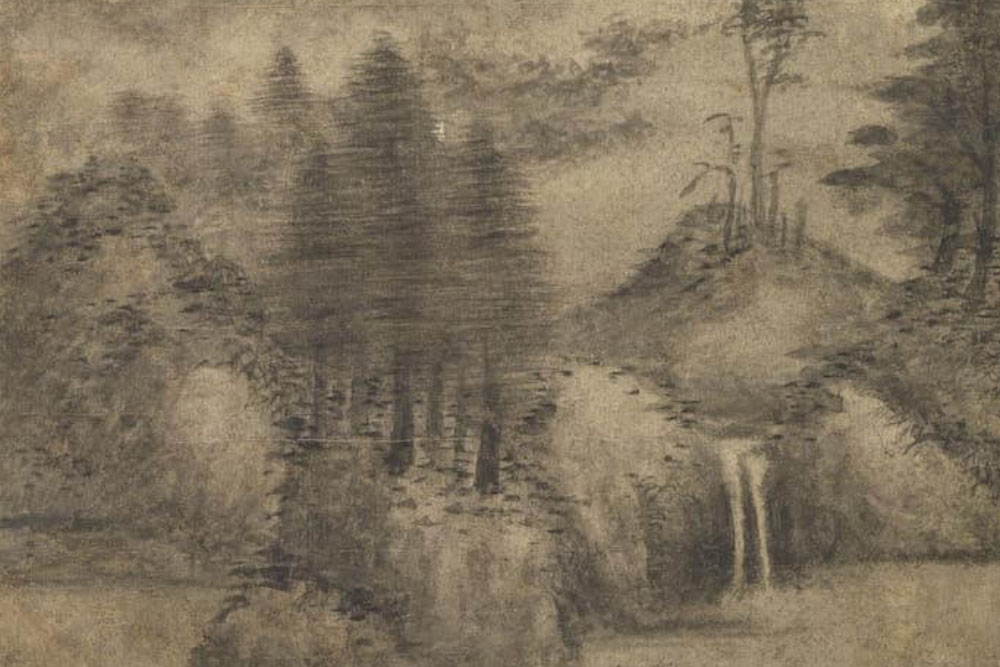Untrammeled Ink of the Western Hills
In his learning on how to paint, Pu Hsin-yu took the ancient masters as his teachers. By copying works of old, he came to realize the styles of and techniques used in various painting schools and traditions, forming a foundation upon which he developed his own manner. Following the ancients extended from his early years into old age, forming a habit of which he never grew tired.
Five paintings by Pu Hsin-yu and four ancient works have been chosen for this section of the exhibit. Among them, Pu's "Viewing the Moon Below a Pine" was done in imitation of Ma Yuan's (fl. 1190-1224) "Chanting to the Moon Among Pines," while his "Forested Peaks in Mist and Rain" originated with Fang Congyi's (14th c.) "Clouds and Snow at Shanyin." The others, such as "Copy of a Tang Painter 's 'Training the Horse," "Copy of Huichong's 'Painting the Idea of a Rustic Bank,'" and "Waterside Pavilion Cold and Quiet Like in Autumn" feature compositions that differ from but still relate to works by such artists as Han Gan (8th c.), Huichong (ca. 965-1017), and Tang Yin (1470-1524), respectively. Placing modern and ancient works together on display, one can particularly feel the strong and indelible link between "imitating the ancients" and "deriving from the ancients" in the art of Pu Hsin-yu.
- Copy of "Official Taming a Horse" by a Tang Artist
- Pu Hsin-yu (1896-1963), Republican period
- Hanging scroll, ink and colors on paper, 56.3 x 32 cm Entrusted from the Cold Jade Hall
As a descendant of the Qing dynasty imperial family, Pu Hsin-yu learned the arts of equestrian riding and archery, having once looked for and inquired about fine steeds. As a result, he was quite familiar with the appearance and behavior of horses.
In the painting here, an official in Tang dynasty clothing holds a rope and attempts to tame a horse, which rears with glaring eyes as it tries to escape. The two locked in struggle create considerable tension in the painting. The brushwork is quite skillful with washes applied after the application of ink outlines. The famous horse painting "Night-Shining White" attributed to the Tang master Han Gan (fl. 8th c.) was once in the collection of Prince Gong, Pu's grandfather, and even passed through his hands. As a result, this work reveals much of the handsome majesty of steeds painted by Han Gan.
- Chanting to the Moon Among Pines
- Attributed to Ma Yuan (fl. 1190-1224), Song dynasty
- Hanging scroll, ink and colors on silk, 144.6 x 76.3 cm
Ma Yuan was a court painter active during the reigns of Emperors Guangzong and Ningzong (1190-1224) in the Southern Song period. In addition to the serene and lyrical atmosphere that he created in his paintings, he was known as "One-corner Ma" and "Dragged-branch Ma Yuan" on account of his distinctive one-corner landscape compositions and craggy tree branches.
The lofty scholar in the lower right under a tall pine gazes into the misty moon-lit scenery, the artist skillfully adopting the composition and method of arrangement found in the Ma Yuan style of painting. However, the texturing strokes of the trees and rocks here emphasize the free and easy speed of the brushwork, suggesting the work of a Zhe School painter working in the style of Ma Yuan in the early to middle Ming dynasty (1368-1644).
- Viewing the Moon Below a Pine
- Pu Hsin-yu (1896-1963), Republican period
- Hanging scroll, ink and colors on paper, 93.3 x 38.6 cm
- Entrusted from the Cold Jade Hall
The arrangement of the scenery in the composition here is similar to "Chanting to the Moon Among Pines" attributed to Ma Yuan of the Song dynasty in this exhibition. The trunks of the pine trees in the left part of this painting twist and cross in an extremely similar manner compared to the composition in the Ma Yuan attribution. This work very well may be an imitation by Pu Hsin-yu based on "Chanting to the Moon Among Pines." However, he used light colors to transform the brooding atmosphere of the evening scene in the original into bright and fresh scenery that seems to be bathed in the pure light of the moon instead.
- Forested Peaks in Mist and Rain
- Pu Hsin-yu (1896-1963), Republican period
- Hanging scroll, ink on paper, 88.2 x 28.7 cm
- Entrusted from the Cold Jade Hall
The moist brushwork in this painting expresses the high humidity that hangs in the mountain air after a rain. Following the mountain forms outlined in ink, horizontal dots of ink were applied with those on the mountaintops and ridges emphasized using scorched ink, the trees on the other hand rendered with more abbreviated brushwork. The large areas of void and washes of ink create the misty atmosphere of a landscape enveloped in clouds and haze.
Pu Hsin-yu in his inscription at the top of this work praises the ink painting styles of such Song masters as Mi Fu (1052-1108) and his son Mi Youren (1074-1151) as well as the Yuan dynasty painter Gao Kegong (1248-1310). This scroll represents Pu's interpretation of the Mi-style "cloudy mountains" style of painting.
- Clouds and Snow at Shanyin
- Fang Congyi (ca. 1301-after 1378), Yuan dynasty
- Hanging scroll, ink on paper, 62.2 x 25.5 cm
Fang Congyi (style name Wuyu, sobriquets Fanghu and Shangqing yushi) was a Daoist at the Shangqing Temple on Mount Longhu (Dragon Tiger) in Jiangxi. In painting, he followed the "Mi-family" style of landscape painting from the Song dynasty.
The overall composition of this painting takes the form of mists extending across mountain foothills, the artist having employed moist dabs of the brush laden with water to create washes and horizontal ink dots for mountain forms distinct from the clouds and mists. This work has much of the quality of cloudy mountains done by Mi Fu and his son Mi Youren in the Song dynasty, except that the brushwork for the "moss" dots and trees is more rhythmic.

